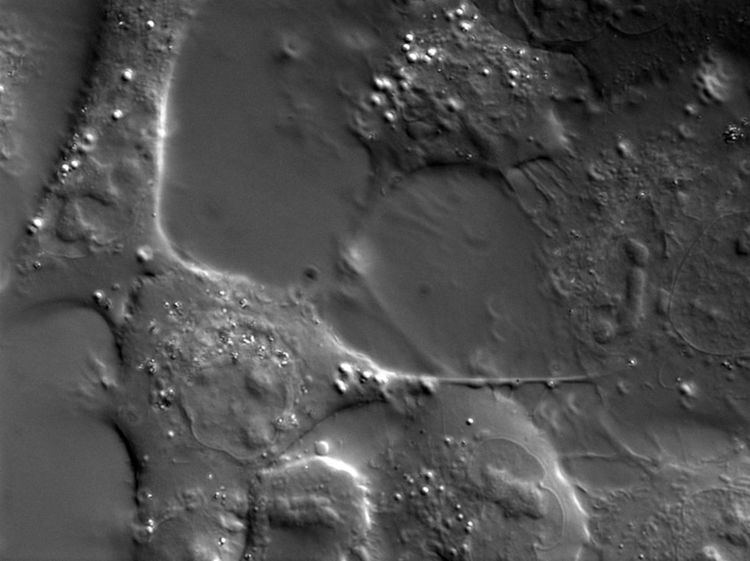 | ||
A549 cells are adenocarcinomic human alveolar basal epithelial cells. The A549 cell line was first developed in 1972 by D. J. Giard, et al. through the removal and culturing of cancerous lung tissue in the explanted tumor of a 58-year-old caucasian male. In nature, these cells are squamous and responsible for the diffusion of some substances, such as water and electrolytes, across the alveoli of lungs. If A549 cells are cultured in vitro, they grow as monolayer cells, adherent or attaching to the culture flask. The human alveolar epithelial cell line A549 may be anchored or suspended in a solution in vitro.
Another characteristic of these cells is that they are able to synthesize lecithin and contain high level of unsaturated fatty acids, which are important to maintain the membrane phospholipids in cells. A549 cell line are widely used as an in vitro model for a type II pulmonary epithelial cell model for drug metabolism and as a transfection host.
